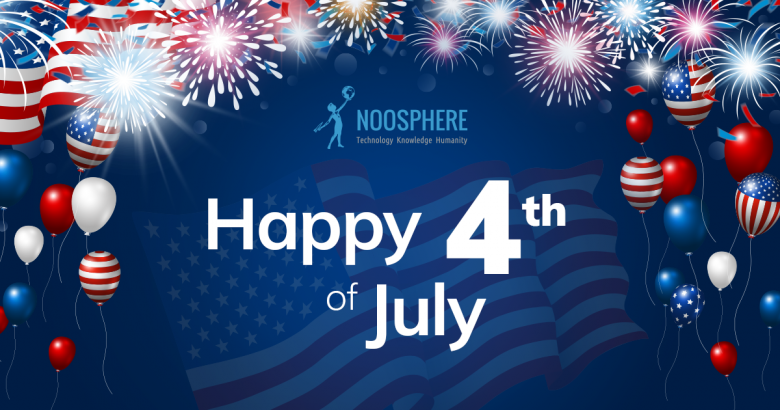The 4th of July is a special day for Americans. On this day in 1776, the Continental Congress adopted the Declaration of Independence and 13 American colonies became free and independent from Great Britain. It has already become a tradition for many events such as ceremonies, picnics, parades, challenges, carnivals and fireworks to be held across the United States. Each of these events is quite large and they are held to commemorate Independence Day and uphold American traditions.
The partners and members of Association Noosphere are primarily aligned in the American markets, so we decided to join the celebration and held some American style activities. Due to the coronavirus pandemic, all activities dedicated to American Independence Day were held online. Activities included the following contests: solve the maze and lead the young dreamer to the hamburgers; snag the Statue of Liberty while it’s moving very fast and screen it; find the differences between two pictures of America; and find the 4 out of 10 “facts” about the United States that are actually false. Our Instagram followers got a great opportunity to participate and win some awesome caps and polo shirts from Noosphere. Additionally, we made a few videos to celebrate this holiday that you can enjoy on the Noosphere TikTok.
The United States is also famous for its innovations and advanced technologies. As our focus at Noosphere is developing the engineering ecosystem, we will share some inventions we can’t live without nowadays that were created in the United States:
- “Life is Motion” is a well-known quote, but in big cities moving safely would be much more difficult without traffic lights. The first manual traffic light was installed in London on December 10, 1868. However, the first electric traffic light was created by Lester Wire from Salt Lake City (Utah, USA). In 1912, he developed (but did not patent) a traffic light with two round electrical signals (red and green). In 1920, his fellow countrymen William Potts and John F. Harriss added the yellow signal to develop three-color traffic lights in Detroit and New York.
- Several countries experience very hot summers, and in some summer weather even lasts all year. It is hard to endure summer days without an air conditioner, isn’t it? Even though air “ventilating” was in use back in 1815, an air conditioner itself was not developed until 1902. The American engineer Willis Carrier assembled the first-ever air conditioner for a Brooklyn printing house in New York, in order to combat humidity which was greatly impairing print quality.
- With the arrival of the microwave oven, it became a lot easier to heat food. The world’s first microwave oven “Radarange” was released in 1947 by the American company “Raytheon”. Percy Spencer, an engineer at “Raytheon”, noticed the tendency of microwave radiation to heat products, and then he patented a microwave oven. The first microwave ovens were only used by the military for quick defrosting of products.
- The most common clasp used for clothing, luggage and other items is the zipper. Its first prototype was created by the American inventor Whitcomb L. Judson in 1891, but that first “zipper” was difficult to use and manufacture. It was not until 1913 that another American engineer, Gideon Sundback, patented a new version of the zipper which became popular by 1923.
- The United States also had a great impact on the development of the banking system, due to creating the first system of non-cash payments. In 1951, Long Island Bank in New York issued the first-ever bank card, which was an ordinary piece of cardboard. Then an imprint of the number and the name of the card owner was added, and it worked on the basis of a punch card. Later, magnetic strips were developed and in the late 1990s microcircuits were integrated into credit cards.
Happy Independence Day to the United States, one of the world’s leading countries!
